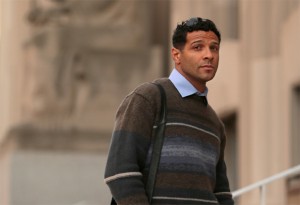Read additional commentary by Jamala on Dan, Spike Lee and gentrification at BlackCommentator. The commentary includes video of Spike’s remarks at Pratt Institute.
I, too, sing St. Louis: The Dan Scott Saga
(This year is the 250th birthday of the City of St. Louis. This is the first of several articles throughout the year that share the stories of residents who have been excluded socially, politically and economically from the progress of the city. The series’ title is a take off from Langston Hughes’ famous poem,” I, too, sing America.” These citizens have been looked upon as second-class citizens, and their contributions or potential contributions have been blocked, discounted or stolen.)
 You probably would have never heard about Dan Scott had it not been for a rare and heavy-handed move by Alderman Joe Roddy and the St. Louis Courts. The story has gone national as yet another sad example of how this city chooses to deal with race relations.
You probably would have never heard about Dan Scott had it not been for a rare and heavy-handed move by Alderman Joe Roddy and the St. Louis Courts. The story has gone national as yet another sad example of how this city chooses to deal with race relations.
After Scott’s arrest in May 2012, Judge Michael Stelzer set bail at $10,000 cash, gave Scott a curfew and ordered that he wear an ankle bracelet. He was banned from his home, youth programs and rental property for 17 months while waiting for his trial. All are located in the Forest Park Southeast (FPSE) neighborhood. Scott was charged with 5 counts of harassment and two counts of obstructing government operations and faced up to six years of prison. This act was designed to kill his spirit, destroy his livelihood and criminalize him.
The crux of Scott’s real crime seems to be his unorthodox youth programs that attract black youth, especially males. A native St. Louisan, Scott move into his current neighborhood some 17 years ago during the height of gangs and the crack cocaine epidemic. With his own meager resources, Scott reached out to youth to teach them marketable skills to make an honest buck. His crimes are passing on his skills and talents to misguided youth in a neighborhood that was barren in programs and services for teens. In addition to being a rehabber, Scott is also a seasoned chess player and boxer. His youth “complex” includes a community garden, a boxing gym, a library and hang-out space.
For years, the passionate and energetic Scott was the darling of the hood. He owns five pieces of property there and once headed up the neighborhood association. He will proudly show you photos of himself with St. Louis mayors, police chiefs, successful business people, famous artists—all who gave him moral encouragement or financial support for his programs. When one of his kids made the Jr. Olympics in boxing and didn’t have the funds to travel, area businesses kicked in the dollars to make sure he got to the regional. Scott has not been able to save all his youth from the violence of the streets but many have grown up, steered clear of the criminal justice system and graduated from high school; some have even gone on to college.
As the FPSE neighborhood that Scott had helped to stabilize during the rough times began to gentrify, Scott began to sharply raise issues about how public funds were being used and how long-time residents were being locked out from the progress. He quickly went from hero to villain to a criminal.
The specter of WashingtonUniversity’s money and might looms large in FPSE. Many multi-million dollar projects have emerged over the last few years and groups of black youth—even if they’re quietly playing chess–are a threat to the plans.
And speaking of scared, the one misdemeanor charge that Scott was convicted of recently was one count of harassment based on an encounter with artist Grace McCammond. McCammond, who is white, received a contract with WashingtonUniversity to paint fire hydrants in the area. Scott asked if his kids could do the prep work for $5 a hydrant. The encounter in front of Sweetie Pie’s Restaurant made her “frightened and fearful of her safety.”
In a time of Stand your Ground killings by “fearful” white people who felt threatened by a black male, this takes the Scott case to a whole new level. The history of white women who felt threatened by a black man also has an ugly history in this country. The bottom line is that when whites are threatened, the outcomes for black people are not good.
Ald. Roddy could’ve played this much differently but in St. Louis, examples must be made of those who challenge racism and white authority. Scott believes Roddy lined up the NSO, the police and the courts to reinforce that example when he could’ve set an example of how participatory democracy works at the neighborhood level, how to include all who want to make a positive contribution.
Here’s what must be done for the year that Dan Scott will be on probation, doing his 40 hours of community service and undergoing anger management sessions. We must keep a watchful eye on this volatile situation. A year is a long time for someone on probation trying to avoid manufactured violations. We cannot allow Dan Scott to be isolated and we must find ways to encourage his positive interaction with a community where he has invested considerable sweat, time and resources. For starters, someone needs to step up to pay for the anklet monitor he was forced to wear for 17 months at $8.50 a day and $30 a month for service fees. In the long term, this city must learn how to take the high road when faced with situations of race and class and not default to the plantation model that maintains inequality, segregation and discrimination on both the personal and institutional levels.



